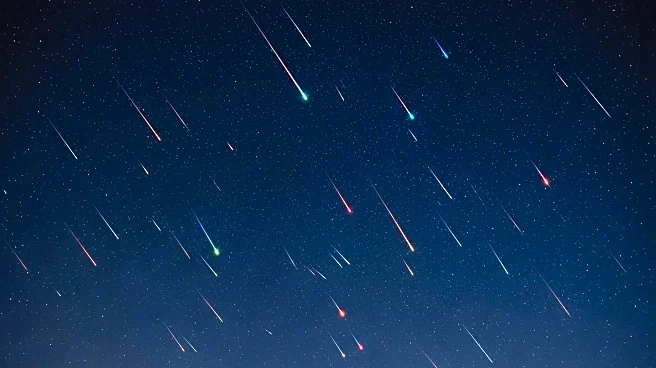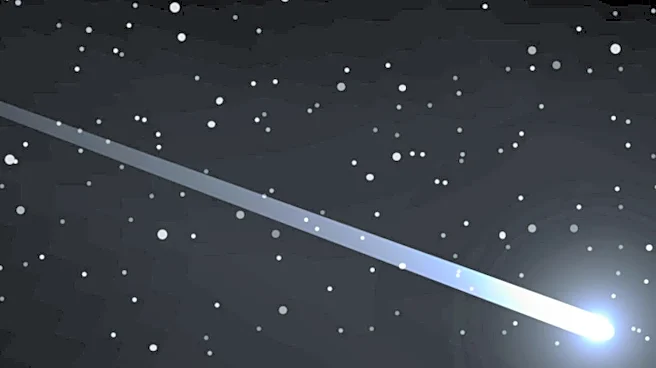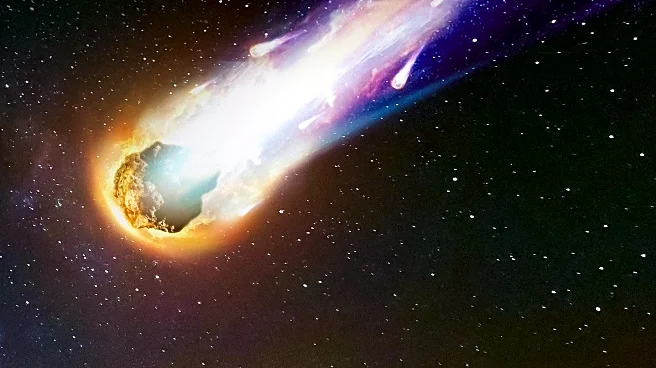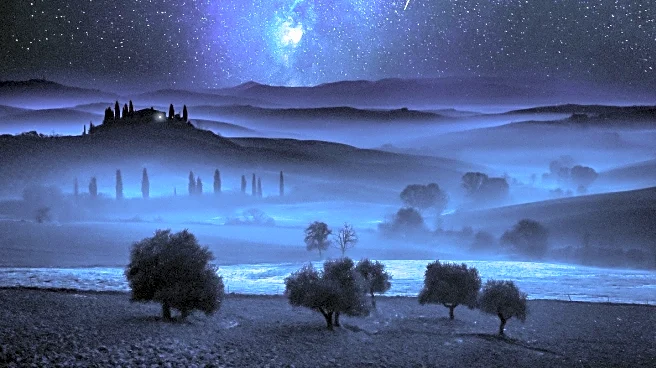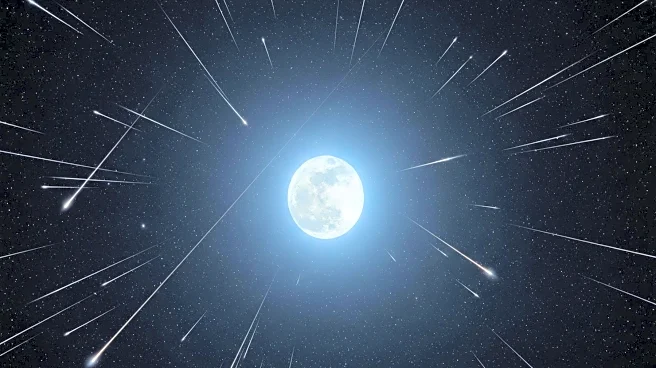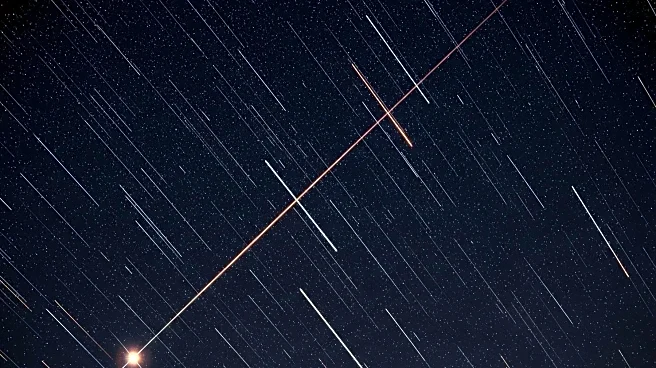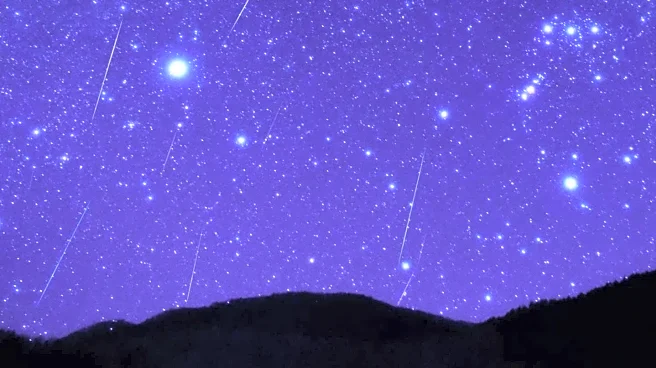What's Happening?
The Draconid meteor shower is set to peak tonight, providing a natural light show as meteors streak across the October sky. This annual event occurs as Earth passes through debris left by comet 21P/Giacobini-Zinner, with the shower active from October 6 to October 10. The peak is expected at 3 p.m. EDT on October 8, when Earth moves through the densest part of the debris trail. Despite the presence of a 93%-lit waning gibbous moon, which may obscure fainter meteors, up to 10 shooting stars per hour could be visible under ideal conditions. The meteors appear to originate from the constellation Draco, located above the Big Dipper in the northwestern sky.
Why It's Important?
Meteor showers like the Draconids offer a unique opportunity for both amateur and professional astronomers to observe celestial phenomena. The event highlights the ongoing interaction between Earth and cosmic debris, providing insights into the composition of comets and the dynamics of our solar system. For the public, it serves as a reminder of the vastness and beauty of space, encouraging interest in astronomy and science. The shower's visibility, despite moonlight, underscores the importance of dark-sky locations for optimal stargazing experiences.
What's Next?
As the Draconid meteor shower concludes, astronomers and enthusiasts will look forward to other upcoming celestial events. The next major meteor shower, the Orionids, is expected to peak later in October, offering another chance to observe meteors. Additionally, advancements in telescope technology and astrophotography continue to enhance the ability to capture and study these events, contributing to scientific understanding and public engagement.
Beyond the Headlines
Meteor showers also have cultural significance, often associated with myths and legends across different societies. They inspire artistic and literary works, reflecting humanity's fascination with the cosmos. Furthermore, the study of meteors contributes to planetary defense strategies, as understanding the behavior of space debris is crucial for predicting and mitigating potential impacts on Earth.

